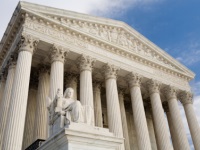The second quarter of 2013 saw the largest quarterly percentage decline in new securities actions since before the 2007/2008 financial crisis. New filings in the first quarter plummeted by 41 percent, from 352 in the first quarter to 234 in the second quarter. This drop represents a 55 percent decrease in the number of new securities actions filed as compared to same period last year (Q2 2012). It has been approximately five years since we have seen a lower number of quarterly filings.
The number of new securities fraud cases also plummeted, falling 59 percent from the prior quarter, with the number of new filings decreasing from 149 to 61. There were also quarterly declines in newly-filed shareholder derivative actions, which decreased from 43 filings in the first quarter to 37 in the second quarter, and breach of fiduciary duty cases, which fell from 99 new filings in the first quarter to 71 in the second quarter.
Not only did the number of securities actions filed drop significantly, but so too did the average settlement amounts. The average settlement for all types of securities cases in the second quarter was just over $37 million, a marked decrease from the average settlement amount of $69.3 million during the first quarter of 2013.
What’s going on? There are a number of factors that may be contributing to these downward filing trends. The stock market has been strong, so many investors have little to complain about. Moreover, the surge in suits against U.S.-listed Chinese companies appears to have run its course, and no new scandal or market development has yet become the next “big thing” that will drive increased filings. In addition, SEC enforcement activities have continued to shift into areas (such as insider trading and whistleblowing) that do not always spawn parallel private litigation. It remains to be seen whether the recent appointment of new SEC personnel or a renewed focus on accounting fraud cases by regulators, which is anticipated by some analysts, will cause a variation in these trends moving forward.
Source = Advisen D&O Claims Trends: 2013 Report (July 2013)









